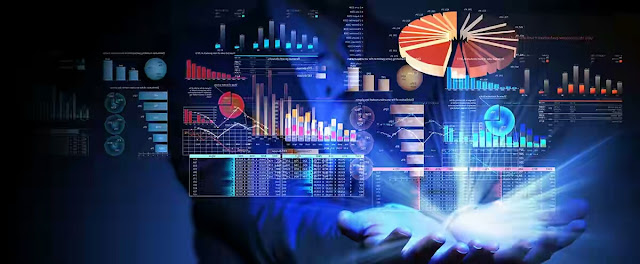SSC201 - STATISTICAL METHOD AND SOURCES I
Statistics is a form of mathematical analysis that uses quantified models, representations and synopses for a given set of experimental data or real-life studies. Statistics studies methodologies to gather, review, analyze and draw conclusions from data. Some statistical measures include mean, regression analysis, skewness, kurtosis, variance and analysis of variance.
BREAKING DOWN 'Statistics'
Statistics is a term used to summarize a process that an analyst uses to characterize a data set. If the data set depends on a sample of a larger population, then the analyst can develop interpretations about the population primarily based on the statistical outcomes from the sample. Statistical analysis involves the process of gathering and evaluating data and then summarizing the data into a mathematical form.
Statistical methods analyze large volumes of data and their properties. Statistics is used in various disciplines such as psychology, business, physical and social sciences, humanities, government and manufacturing. Statistical data is gathered using a sample procedure or other method. Two types of statistical methods are used in analyzing data: descriptive statistics and inferential statistics. Descriptive statistics are used to synopsize data from a sample exercising the mean or standard deviation. Inferential statistics are used when data is viewed as a subclass of a specific population.
Mean
A mean is the mathematical average of a group of two or more numerals. The mean for a specified set of numbers can be computed in multiple ways, including the arithmetic mean, which shows how well a specific commodity performs over time, and the geometric mean, which shows the performance results of an investor’s portfolio invested in that same commodity over the same period.
Regression Analysis
Regression analysis determines the extent to which specific factors such as interest rates, the price of a product or service, or particular industries or sectors influence the price fluctuations of an asset. This is depicted in the form of a straight line called linear regression.
Skewness
Skewness describes the degree a set of data varies from the standard distribution in a set of statistical data. Most data sets, including commodity returns and stock prices, have either positive skew, a curve skewed toward the left of the data average, or negative skew, a curve skewed toward the right of the data average.
Kurtosis
Kurtosis measures whether the data are light-tailed or heavy-tailed that correlate to a standard distribution. Data sets with high kurtosis have heavy tails, which results in less investment risk. Data sets with low kurtosis have light tails, which results in greater investment risk.
Variance
Variance is a measurement of the span of numbers in a data set. The variance measures the distance each number in the set is from the mean. Variance can help determine the risk an investor might accept when buying an investment.
Analysis of Variance
Ronald Fisher developed the analysis of variance method. It is used to decide the effect solitary variables have on a variable that is dependent. It may be used to compare the performance of different stocks over time.
Statistical Significance
Statistical significance means that a result from testing or experimenting is not likely to occur randomly or by chance, but is instead likely to be attributable to a specific cause. Statistical significance can be strong or weak, and it is important to disciplines that rely heavily on analyzing data and research, such as finance, investing, medicine, physics and biology.
When analyzing a data set and doing the necessary tests to discern whether one or more variables have an effect on an outcome, statistical significance helps show that the results from the test are real and not just by luck or chance. Problems arise in tests of statistical significance because researchers are usually working with samples of larger populations. As a result, the samples must be representative of the population, so the data contained in the sample must not be biased in any way.
Statistical significance does not always indicate practical significance, meaning the results cannot be applied to real-world business situations. In addition, statistical significance can be misinterpreted when researchers do not use language carefully in reporting their results. Another problem that may arise with statistical significance is that past data, and the results from that data, whether statistically significant or not, may not reflect ongoing or future conditions. In investing, this may manifest itself in a pricing model breaking down during times of financial crisis as correlations change and variables do not interact as usual. Statistical significance can also help an investor discern whether one asset pricing model is better than another.
